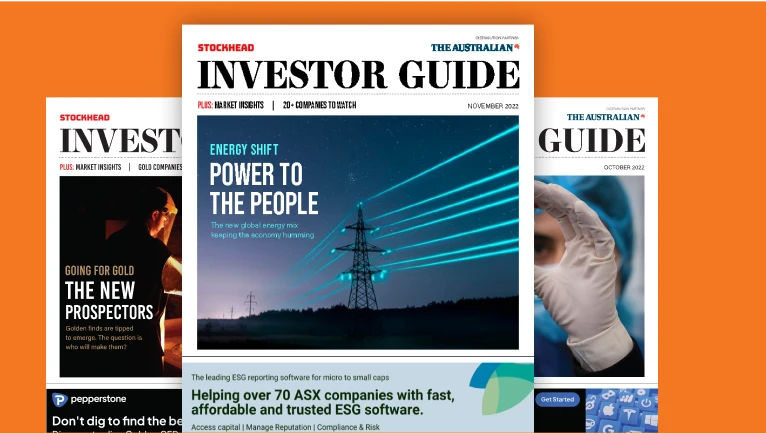Diggers and Dealers: Government flies in to save critical minerals from China

The Aussie government has swooped in with timely support for the critical minerals sector. Pic via Getty Images
- Rare earths miners are hopeful of improved pricing, amid suggestions the Feds are considering buying material with a US style price floor
- It comes as the federal and state governments ramp up support for flagging critical minerals producers and refiners
- Need to compete with China and rising demand outside the Middle Kingdom fuels fears around security of supply
Rare earth miners have hailed a potential price floor floated by the federal government as a wave of support comes in an attempt to save a critical minerals industry hobbled by competition with China and rising energy costs.
It comes as Canberra has stepped in to help save two struggling smelters in South Australia and Tasmania and faces calls to salvage the potential closure of the famous Mt Isa copper smelter, the industrial lynchpin of the Queensland mining hub known as Stack City for its famous barber’s pole smelter stack.
Following on from news the Trump administration had set a price floor of US$110/kg for NdPr, underwriting years of profits for California based and Gina Rinehart-backed rare earths producer MP Materials, Federal Mines Minister Madeleine King flew into Kalgoorlie-Boulder’s Diggers and Dealers conference on Tuesday with the same measure under investigation by the Albanese government.
Federal Labor already announced a $1.2bn critical minerals stockpile ahead of its election win against Peter Dutton’s Liberal opposition in May.
It is designed in part to provide a marketplace to incentivise the construction of new mines in refineries in commodities where China’s control and oversupply have curbed prices in the past two years.
Think rare earths, nickel, lithium and graphite.
Rare earths are arguably the most critical, with the supply chain for the magnet metals needed to power EV motors, wind turbines, drones, aviation and defence tech almost entirely controlled by China.
The boss of Arafura Rare Earths (ASX:ARU), another Rinehart backed rare earths hopeful aiming to sign off on a billion dollar-plus mine and separation plant at Nolans in the NT, said the price floor could help establish a price index outside Chinese control.
“We have been advocating both with Canberra but also publicly, that the strategic reserve presents an incredible, I think, opportunity for Australia and the Australian government to show global leadership in a high impact, low risk way,” Darryl Cuzzubbo said on Tuesday.
“I would argue that … should be linked to a non-China controlled price index, such as the BMI index that was established a week ago, because that will fast track a functioning market for rare earths, and that will bring about a diversified supply chain for rare earths.
“Where a floor helps, it separates it from the China controlled index today, and hence just speeds up that whole process from an investor perspective.”
Miners rejoice
Cuzzubbo says Nolans, long trapped by volatility in rare earths pricing, can be developed and be profitable at a long term price above US$100/kg.
He thinks a price floor similar to that set by the US Department of Defense in its multi-billion investment in MP will bring the prospect of a US$130-160/kg western rare earth price, viewed as incentive pricing for early-stage operations, into view.
The company also has Korean customers waiting in the wings, including carmakers Hyundai and Kia, but Cuzzubbo believes they will accept higher rare earths prices – which make up only a small component of the cost of constructing an EV – to ensure security of supply.
Chinese-linked pricing has been closer to US$60/kg over the past year, chilling investment outside the Middle Kingdom.
There is only one operating rare earths mine in Australia, Lynas’ (ASX:LYC) Mt Weld near Laverton, which is supported by a midstream plant in Kalgoorlie and separation plant in Malaysia.
Lynas executive Alex Logan said the company was still waiting for consultation on the shape of the critical minerals reserve, but noted evidence demand for rare earths continues to grow and the market is tightening, calling the growth of magnet manufacturing outside China real.
Iluka Resources (ASX:ILU) is around a third of the way through the construction of a refinery at Eneabba, near Geraldton in WA, which would produce rare earths oxides from monazite, a mineral sands by-product endowed with REEs.
The government has stumped up $1.8bn in low cost loans to underwrite the facility.
Lynas shares rose 6% on Tuesday, with Arafura up 4% and Iluka up more than 7%.
Victory Metals (ASX:VTM), which owns the heavy rare earths endowed North Stanmore project in WA, was up 10%, while Queensland explorer Red Metal (ASX:RDM), the owner of the granite hosted Sybella deposit, was up 4%.
“Hopefully, the Australian Government’s initiative to underwrite REO supply to the world encourages new mines and new magnet manufactures to emerge,” Red Metal boss Rob Rutherford said.
Smelters at risk
King’s visit to Kalgoorlie alongside WA Mines Minister David Michael came as Nyrstar, a unit of trading giant Trafigura, announced a $135m support package from the Feds, South Australian and Tasmanian governments, that will help sustain its lead and zinc smelters at Port Pirie and Hobart.
The funding will help Nyrstar progress studies to produce China controlled critical minerals antimony, germanium, indium and bismuth.
It includes a commitment from Nyrstar to maintain existing operations, which employ 1400 people but have been hit by low base metals prices, ageing infrastructure and high energy costs.
“Port Pirie and Hobart represent a key part of Australia’s metals processing infrastructure. We have an opportunity to build upon this to create a new source of economic growth, producing metals for defence industries, renewable energy and high technology manufacturing,” Nyrstar Australia CEO Matt Howell said.
“Through this partnership, Australia is demonstrating that it is at the forefront of taking meaningful steps to retain nationally strategic smelters and partner with industry to provide urgent short-term support, as well as work on solutions for their long-term viability.”
It’s believed to be losing about $30m a month, with Glencore considering its future amid a business review planned to end in September.
Evolution Mining’s (ASX:EVN) Ernest Henry copper and gold mine supplies Glencore under a life of mine offtake picked up when EVN acquired the mine in a $1bn deal from Glencore in 2021.
Glencore can take that concentrate anywhere it wants, but EVN MD Lawrie Conway warned the federal government if it didn’t land on a rescue package the smelter would close and never reopen.
“Having smelting capacity for a commodity that is going to be critical to the renewable pathway is is really fundamentally important,” he said.
But supporting new mining operations around the Mt Isa region is important as well, Conway said.
To support the Mt Isa smelter, ore is essential to supply underfed concentrators in the region like Ernest Henry, especially with Glencore shutting its long-running Mt Isa Mines underground operations and concentrator last week.
Junior copper developers in Queensland have been buoyed by the increased focus on the State’s copper sector in recent months.
QMines (ASX:QML) exec chair Andrew Sparke, whose company owns the Mt Chalmers and Develin Creek projects near Rockhampton, told Stockhead the interest shown in supporting the State’s evolving copper sector by the federal and state governments was a positive for juniors looking to fund and develop new mines.
At Stockhead, we tell it like it is. While QMines, Victory Metals and Red Metal are Stockhead advertisers, they did not sponsor this article.
Related Topics

UNLOCK INSIGHTS
Discover the untold stories of emerging ASX stocks.
Daily news and expert analysis, it's free to subscribe.
By proceeding, you confirm you understand that we handle personal information in accordance with our Privacy Policy.








